I have a list of lists that contain a list at the end. If this list has more than one element, I want to duplicate the entry and for each with the individual value without being in the list.
E.g.
[[1, [1,2]] -> [[1, 1][1, 2]]
There's probably a much more efficient solution than the one I've tried, but I'd like to understand why you're giving me the mistakes you're giving.
First, even though it indicates that it is not the same list, it is changing the value in both lists. Second, when I create the second element, it changes the previous one as well. Any explanation is welcome. Thanks

